What do you think of when you hear “Canada”? Vast landscapes, wild and remote, diverse cultures— many Indigenous—, and a famously friendly spirit. Maybe you think of the Rockies, the CN Tower, Niagara Falls, or its cosmopolitan cities like Toronto or Vancouver. But beyond these well-known facts, what else makes Canada well known?
In this article, we’ll look at 25 fun facts about Canada and what it’s best known for.
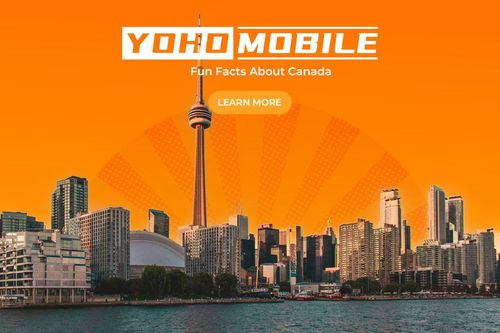
Photo by ennvisionn on Pexels
What is Canada Most Famous For? Reasons to Visit Canada
Here are some top reasons to visit Canada and what makes it so well known:- Canada's Iconic Landscapes: Canada has some of the world’s most varied landscapes, from the Rockies to Niagara Falls. National parks like Banff and Jasper offer impressive views and endless outdoor fun.
- Multicultural Cities of Canada: Toronto, Vancouver, and Montreal are multicultural centers for arts, food, and history.
- Adventure Sports in Canada: Canada is ideal for adventure seekers. Ski in Whistler, hike the Rockies, or kayak on Ontario's lakes.
- Discover Indigenous Heritage: Canada is home to the First Nations, Inuit, and Métis. Visitors can explore this heritage through art, festivals, and historic sites.
- Taste Canada’s Local Cuisine: Enjoy local dishes like fresh seafood, poutine, and maple syrup treats.
- Northern Lights in Canada: Canada is known as one of the best places to see the Aurora Borealis, especially in the northern areas.
- Canada's Welcoming Locals: Known for their warmth and politeness, Canada makes visitors feel at home.
25 Fun Facts About Canada: Discover the Great White North
Canada is the second-largest country in the world
Canada is the second-largest country in the world by land area. It covers about 9.98 million km2, from the Pacific Ocean in the west to the Atlantic Ocean in the east and the Arctic Ocean to the north.
Canada has ten provinces and three territories with varied landscapes, including mountains, forests, lakes, and plains. Such variety shapes its climates and ecosystems.
71% of the world's maple syrup comes from Canada
Canada, especially Quebec, produces 71% of the world’s maple syrup. This syrup is made by tapping sugar maple trees to gather sap, which is then boiled down. Quebec leads due to its large number of sugar maples and ideal climate for sap flow. Other syrup-producing areas include Ontario, New Brunswick, Prince Edward Island, and Nova Scotia.
Maple syrup is mostly used in cooking and is a symbol of Canada’s culture. Many people think it’s only for pancakes or waffles, but it has other uses too. You can add it to a cinnamon roll, drizzle it on ice cream, or pair it with roasted sweet potatoes.
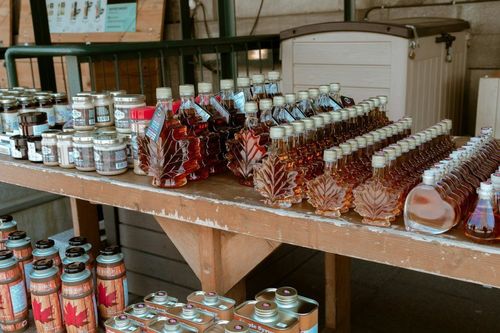
Photo by Ed Vázquez on Unsplash
Niagara Falls generates power for the US and Canada
Niagara Falls’ hydroelectric supply of energy to both the United States and Canada. Its strong flow of water is used in power plants, which turn water energy into electricity. It supplies energy to both countries’ grids as a renewable source that has operated for over a century. Ontario Power Generation in Canada and the New York Power Authority in the U.S. share this power.
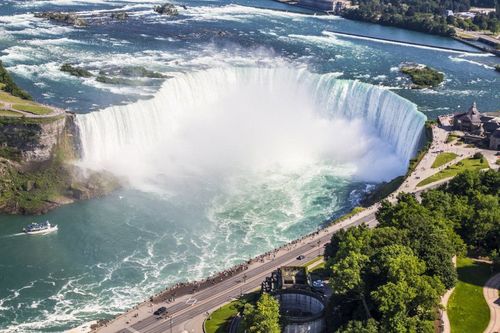
Banff National Park is Canada’s oldest national park
Banff National Park is Canada’s oldest national park, established in 1885, and the world’s third oldest. It sits in Alberta’s Rocky Mountains and covers about 6,641 square kilometers.
The park has unmatched natural beauty with mountains, glaciers, and thick forests. Banff National Park is also part of the Canadian Rocky Mountain Parks UNESCO World Heritage site. Millions visit each year for hiking, camping, and watching wildlife. Banff and Lake Louise serve as hubs for visitors and outdoor activities. Grizzly bears live in the Bow Valley Parkway and areas around the town.
Fun Facts About Canada: Banff National Park has over 1,000 glaciers.
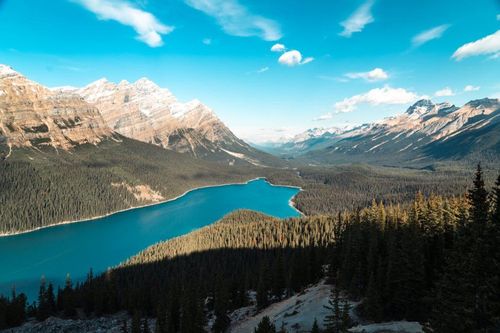
Canada's CN Tower: tallest free-standing structure for 30+ years
The CN Tower in Toronto, Canada was the world’s tallest free-standing structure for over 30 years, from 1976 to 2007. It stands at 553.3 meters (1,815 feet). Built mainly for telecommunications, the tower supports TV and radio broadcasting. It is also a popular tourist spot with an observation deck, including the SkyPod, which offers 360° views of Toronto and beyond, and a rotating restaurant.
The CN Tower is one of Canada’s and Toronto’s most known landmarks.
Fun Facts About Canada: The CN Tower has a glass floor to let visitors look down from 342 meters (1,122 feet). It also offers an outdoor walk called EdgeWalk, where people walk along the ledge at 356 meters (1,168 feet).
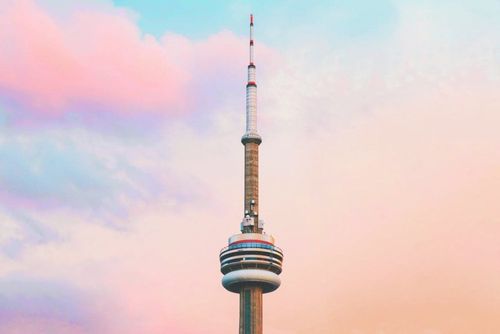
Yoho National Park has over 400 km of hiking trails
Yoho National Park in British Columbia, Canada, has over 400 km of hiking trails. These trails lead to mountains, waterfalls, and forests. Some of the most important are the Iceline Trail, Burgess Shale, and Lake O’Hara circuits.
Visitors can see dramatic peaks, scenic lakes, along with fossils and rock formations like the Burgess Shale beds. The park’s paths connect to viewpoints and features such as Takakkaw Falls, one of Canada’s highest waterfalls, and Emerald Lake, known for its green color. Hikers can choose from easy walks to tough backcountry routes.
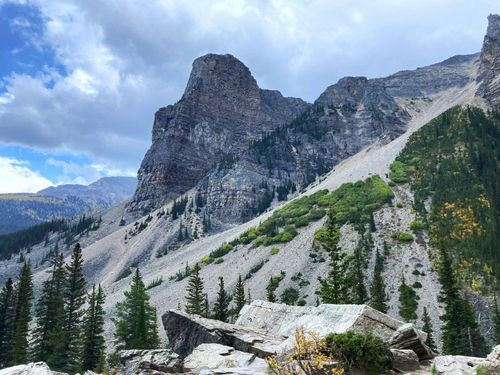
Tim Hortons is more popular than Starbucks in Canada
Tim Hortons, a Canadian restaurant chain, holds roughly 54% of Canada’s coffee market with over 4,200 stores. Starbucks, on the other hand, has around 1,400 locations, which is about 7%.
There is no doubt that Tim Hortons is more popular with Canadians, as it is a symbol of Canada’s national identity. Tim Horton, a well-known Canadian hockey player, founded it in 1964. Since then, Tim Hortons has grown to be Canada’s largest restaurant chain. It serves coffee, donuts, sandwiches, breakfast egg muffins, and other fast food. Its most popular orders include original blend coffee, double-double coffee, donuts, and Timbits.
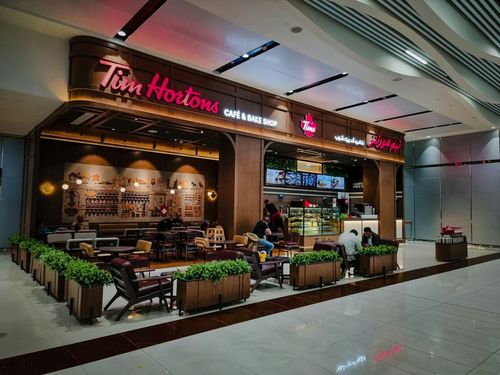
Hockey is Canada's national winter sport
Hockey is Canada’s national winter sport and a strong part of Canadian culture. It has a long history, with organized games starting in the 1800s. Hockey is enjoyed across Canada through local rinks, school programs, and big tournaments, both national and international.
Canada has seven NHL teams: the Canadiens, Senators, Maple Leafs, Flames, and Oilers. Some rank among the five most valuable teams. The National Hockey League (NHL), with Canadian teams, is one of the top leagues worldwide. Also, the Hockey Hall of Fame in Toronto honors the best in ice hockey, including top Canadian players.
Fun Facts About Canada: Tim Horton, hockey star, co-founded the Tim Hortons chain
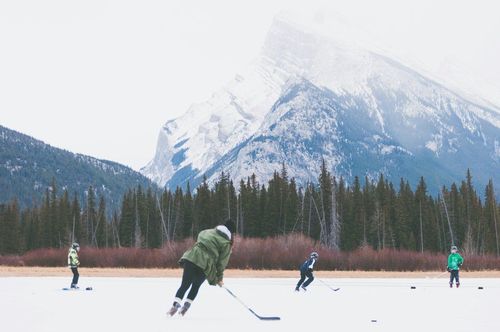
Photo by Priscilla Du Preez 🇨🇦 on Unsplash
Canada has over 70 Indigenous languages
Canada is well known for its blend of identities and deep Indigenous heritage. In fact, there are over 70 Indigenous languages spoken across different regions. These languages come from 12 language families, including Cree, Inuktitut, and Ojibwe. First Nations, Inuit, and Métis communities. These groups shape Canada’s history, culture, and traditions.
Toronto, Vancouver, and Montreal are cosmopolitan cities where Indigenous and immigrant cultures mix. While fewer people speak Indigenous languages today, efforts are being made to protect and revive them through education projects.
Whistler Blackcomb is North America's largest ski resort
Whistler Blackcomb in British Columbia, Canada is North America’s largest ski resort. It includes two mountains, Whistler and Blackcomb, and has over 8,000 acres of skiable terrain with more than 200 trails. The resort’s lift system features the PEAK 2 PEAK Gondola, which connects the two mountains and holds records for length and height.
Whistler Blackcomb offers skiing, snowboarding, and other winter activities, attracting many visitors with its diverse terrain and broad range of options.
Fun Facts About Canada: Whistler Blackcomb in British Columbia, Canada hosted the 2010 Olympic and Paralympic Games.

Photo by Razvan Chisu on Unsplash
Canadians apologize so much they needed an "Apology Act"
Canadians are known for saying “sorry,” even when not at fault. For that reason, in 2009, Ontario passed the “Apology Act,” allowing Canadians to apologize without it being used as proof of fault in court.
From that date on, Canadians can express regret or sympathy openly, without being used as legal risk.
Canada has two official languages but over 200 additional
Canada has two official languages: English and French. French is mostly spoken in Quebec, while English is common elsewhere. Both languages are used in government and official communication. There are also over 70 Indigenous languages spoken by First Nations, Inuit, and Métis communities. Due to its diverse population, Canada also has over 200 languages spoken nationwide, including those from immigrant communities.y
Canada celebrates Thanksgiving in October, not November
Canada has Thanksgiving Day on the second Monday of October, unlike the U.S., where it is in November. The holiday thanks for the harvest and blessings from the year, similar to American Thanksgiving. The earlier date is due to Canada’s harvest season, which ends sooner because of its northern location.
Read More: Thanksgiving Day in 2024: A Tradition That Unites Us
Canada has the longest unprotected land border in the world
Canada has the longest unprotected land border with the United States, measuring about 8,891 kilometers. It runs from the Atlantic Ocean in the east to the Pacific Ocean in the west, reaching north to Alaska. The Canada-U.S. border crosses forests, mountains, and lakes. It was established through different treaties between the two countries, including the Treaty of Paris in 1783 and the Oregon Treaty in 1846. It also enables trade and travel between Canada and the U.S.
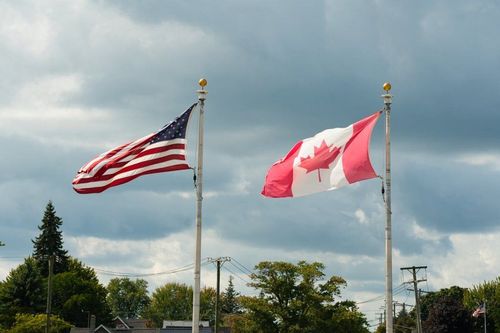
Canada’s temperature record rivals Antarctica's coldest
Canada has extremely very cold weather, especially in the north. A fun fact about Canada is that the lowest recorded temperature was -63°C in Snag, Yukon, in 1947. On average, winter temperatures can drop below -40°C in places like Yukon, Saskatchewan, Northwest Territories, and Nunavut.
This cold weather affects daily life. For example, Canadians need strong roads, warm clothes, and good heating systems. Often, these freezing temperatures create ice roads and frozen lakes, which serve as temporary routes for travel in winter.
Fun Facts About Canada: In some northern areas, frozen rivers and lakes are used as temporary ice roads during the winter months.
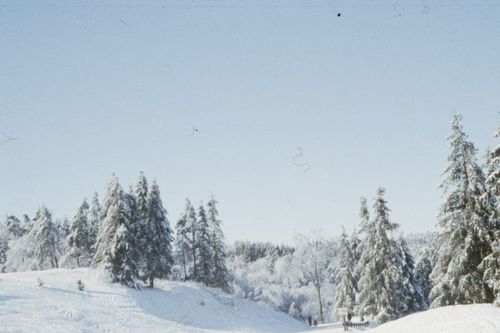
Photo by Annie Spratt on Unsplash
Insulin was invented in Canada
Canada is well known for a major medical discovery: insulin. In 1921, Dr. Frederick Banting and Charles Best at the University of Toronto isolated insulin, which helped patients control their blood sugar. Their work changed diabetes treatment, turning a deadly disease into one that could be managed.
The insulin discovery helped put Canada in a leading role in medical research and improved care for diabetes around the world. Dr. Banting won the Nobel Prize in 1923.
Canada's Jasper National Park hosts dark-sky astronomy events
Jasper National Park hosts astronomy events where visitors can view the night sky. Events often include talks and stargazing with guides. As a dark-sky preserve, it keeps light pollution low, to make stars and space easy to see. Each year, the Jasper Dark Sky Festival offers activities focused on space.
The park’s remote location and efforts to reduce artificial light make it great for seeing things like the Northern Lights, meteor showers, and the Milky Way. Jasper also the the biggest park in the Canadian Rockies, has rugged peaks, large glaciers, teal lakes, and alpine meadows.
Fun Facts About Canada: Jasper National Park is designated as a Dark Sky Preserve, meaning it limits artificial light to enhance stargazing conditions.
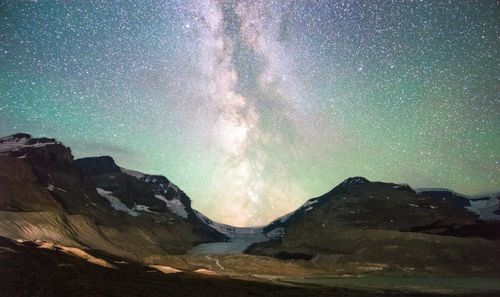
Photo by Caleb White on Unsplash
Canada is the only country that celebrates Victoria Day
Canada is the only country that celebrates Victoria Day on the last Monday before May 25. This holiday marks the birthday of Queen Victoria, who ruled during Canada’s formation as a confederation.
Victoria Day also marks the start of summer, with many areas hosting parades, fireworks, and community events. It is a statutory holiday in most provinces and territories.
Read More: Victoria Day 2024: The Unique Holiday From Canada
Canada has some of the world’s largest freshwater lakes
Canada has some of the world’s largest freshwater lakes. These lakes include Lake Superior, the largest freshwater lake by surface area, the Great Lakes, which it shares with the United States, as well as Lake Huron and Lake Ontario.
Canada also has other large lakes like Great Bear Lake and Great Slave Lake in the Northwest Territories. These lakes are vital for water resources, local ecosystems, and regional economies.
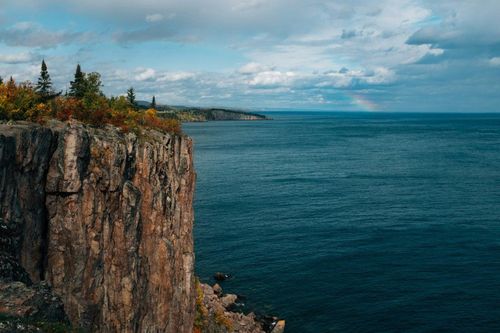
Photo by Andrew Ling on Unsplash
Canada’s famous Poutine originated in Quebec
Some of the best-known dishes from Canada is poutine, which was created in Quebec in the late 1950s. Although different towns claim to be its birthplace. The authentic poutine recipe is defined by three simple ingredients: fries, cheese curds, and gravy. It gained popularity in rural Quebec before spreading to other parts of Canada and the world.
The poutine has become a symbol of Canadian food, often found in diners, fast-food places, and poutine shops across Canada.
Fun Facts About Canada: Canada hosts poutine festivals where chefs show off creative versions of the dish. There are many variations, including toppings like pulled pork, lobster, or foie gras.
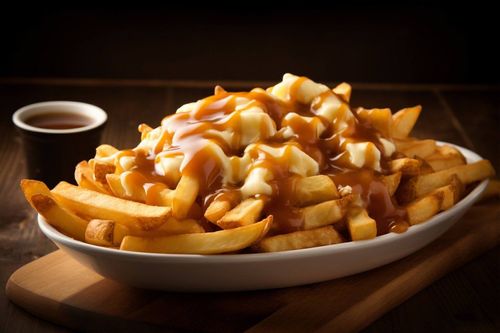
The longest coastline in the world belongs to Canada
Canada has over 202,080 kilometers of coastline, the longest coastline in the world. It meets three oceans: the Atlantic, Pacific, and Arctic. Canada’s coastline includes rocky shores, fjords, sandy beaches, and icy areas. It is also the habitat of diverse marine life and helps industries like fishing and shipping.
Canada is a top spot to see the Northern Lights
Canada is a top place to see the Northern Lights because it lies in the auroral zone, which has high aurora activity. The best views are in the northern parts, such as Yukon, Northwest Territories, and Nunavut. Alberta and Manitoba are also good spots to see the Northern Lights, especially away from city lights. Likewise, the best time to see the lights is from late fall to early spring when nights are long and dark.
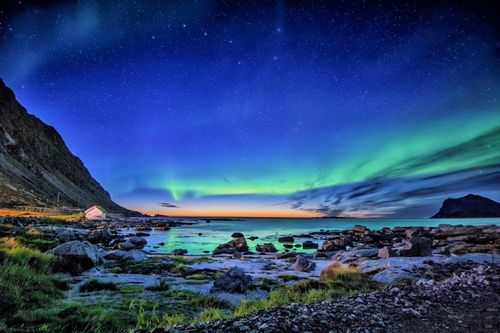
More than 20% of Canadians are foreign-born
Canada is known for its multiculturalism. Over 20% of Canadians are born outside the country, which makes Canada one of the most welcoming countries for immigrants. In fact, the country encourages and welcomes newcomers for all sorts of jobs. Canada’s immigration system includes programs for jobs, family reunions, and refugees to draw in and help new residents.
The main sources of immigrants are India, China, the Philippines, and Pakistan. Big cities like Toronto, Vancouver, and Montreal have many different people and languages.
The Bruce Peninsula in Canada is home to rare orchid species
Canada’s Bruce Peninsula is the habitat of many types of orchids, including some of the rarest. Over 40 kinds of native orchids thrive there because of the climate and landforms such as wetlands, forests, and limestone. Some species are the Eastern Prairie Fringed Orchid, critically endangered in North America, the Calypso Orchid, which only grows in undisturbed forests, and the Ram’s Head Lady’s Slipper, with its uncommon distinct shape.
Canada also plans to further protect these orchids and their habitats, as they face risks from habitat loss, human actions, and environmental changes. The Bruce Peninsula is best known for its efforts to protect diverse and rare plant life.
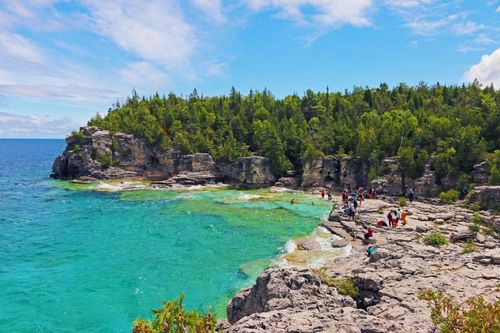
Photo by Luke Smith on Unsplash
Traveling to Canada Soon? Stay Connected With Yoho Mobile
Wherever your travels take you —Stay connected with Yoho Mobile and never miss a moment on your trip!- Instant setup—no physical SIM needed.
- Flexible data plans—local, regional, and global.
- Competitive pricing—best GB rates.
- 24/7 support—help anytime you need it.
- Avoid roaming fees—pay only for what you use.
- Trusted by travelers worldwide
🎁 Exclusive Offer for Our Readers!🎁Enjoy a 15% discount on your orders with Yoho Mobile. Use the code 🏷️ YOHOREADERSAVE 🏷️ at checkout. Stay connected and save more on your trips with our eSIM. Don’t miss out—start saving today! |
FAQs About Canada Fun Facts
Is Canada bigger than the US?
Yes, Canada is geographically larger than the United States. Canada is the second-largest country by land area, at 9.98 million square kilometers, while the United States is about 9.83 million square kilometers. However, the U.S. has a larger population.
How far is Canada from California?
The distance between California and Canada varies by location. The shortest distance from northern California to the nearest point in Canada (British Columbia) is about 800 miles (1,290 kilometers). Flight distances from major cities like Los Angeles to Vancouver are around 1,080 miles (1,740 kilometers).
Is Canada worth visiting?
Absolutely! Canada is worth visiting and is known for its varied landscapes, including mountains, forests, and coastlines, along with its cultural diversity and very friendly people. Visitors can explore national parks like Banff and Jasper, cities like Toronto and Vancouver, and attractions such as Niagara Falls and the Northern Lights. Outdoor activities like hiking and skiing are also must-tries.

